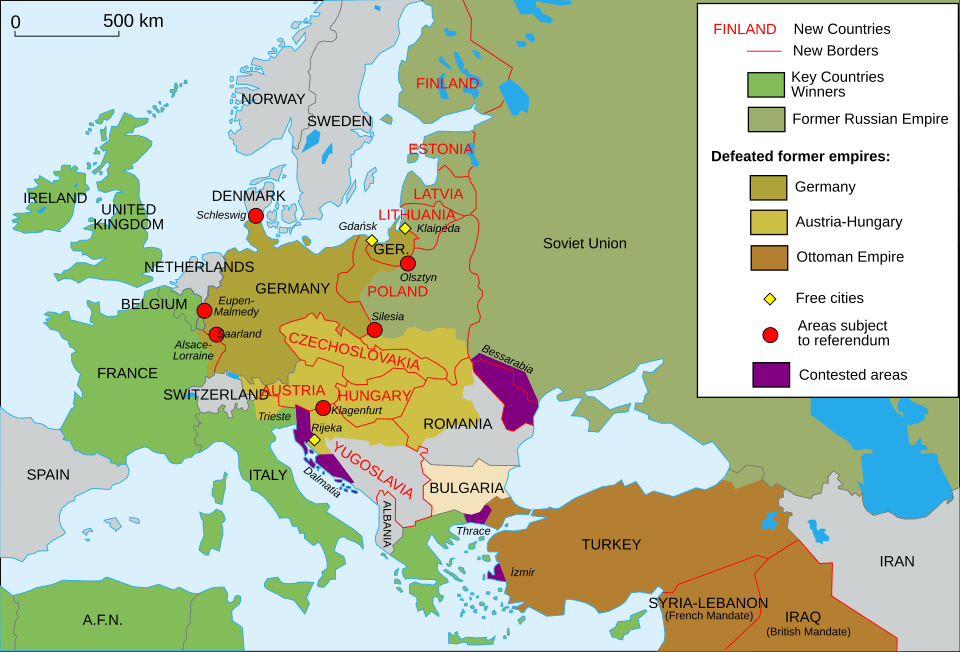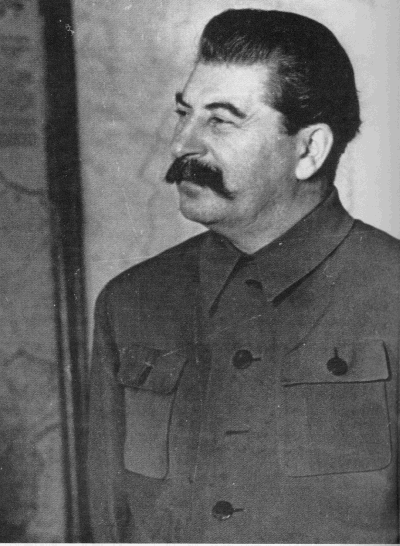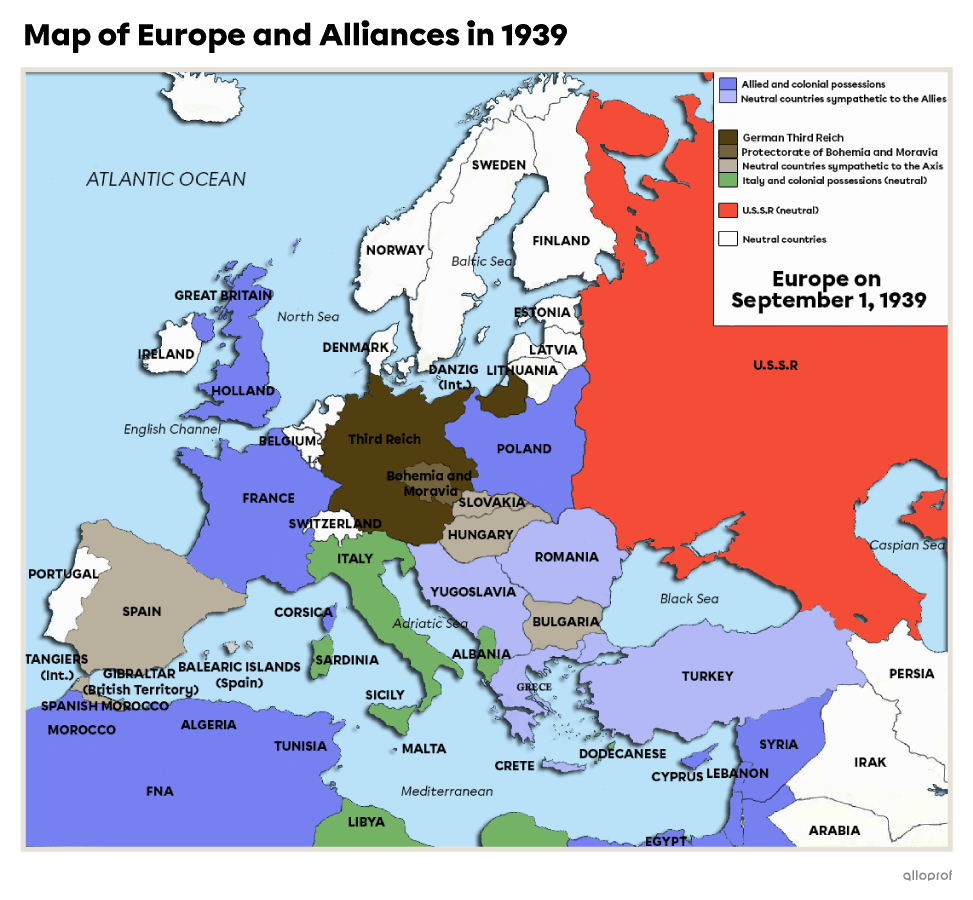The Allied victory that ended World War I left political scars that were felt in the years following the Treaty of Versailles in 1919. The winning countries used this treaty to impose their terms on the defeated countries, who resented these impositions. The Treaty of Versailles also created several small nations that were still fragile in the 1920s. The new borders had been drawn randomly, without taking into account the different peoples and cultures that existed and their distribution within the territories.

Despite the potential for tension, Europe lived through the 1920s with a desire for peace, harmony and stability.
Several treaties were ratified in the decade following World War I. The nations wanted to take measures to prevent another world war, so the League of Nations was created in 1920. This institution had limited powers. Its main task was to persuade leaders to implement solutions that they might not have implemented otherwise.
By signing the agreement at the Washington Conference in February 1922, the main naval powers agreed to reduce and limit their maritime fleets. These powers included the United States, the United Kingdom, Japan, France and Italy. During the Locarno Conference in October 1925, the European nations signed an agreement delimiting Europe’s borders. In 1926, the League of Nations admitted Germany to its ranks. The main peace agreement, called the Kellogg–Briand Pact, was signed in Paris on August 27, 1928. It was ratified by about 60 states, and stipulated that all countries renounced war and undertook to resolve conflicts peacefully.
The Great Depression marked the end of this harmonious period. Governments were experiencing the same difficulties at the same time: struggling to implement international treaties while experiencing economic and social difficulties. Following the stock market crash, there was a massive increase in left-wing political demands and protests. This left-wing movement tended towards the revolutionary left and communism. At the same time, several governments were faced with the rise of a far right-wing ideology called fascism.
During the 1920s, Italy was already experiencing a serious economic, social and moral crisis. Fascism was already present in Italy in 1920, when Benito Mussolini founded the National Fascist Party. Fascist ideas appealed to the population who saw them as a way of putting an end to the economic crisis.
In 1922, Mussolini’s party was elected and Mussolini became the head of the Italian government. He immediately established a dictatorial regime based on a strong government. The regime also relied on strong nationalist sentiment and a single party. During the 1930s, Italy tried to build closer ties to the Western democracies, signing an agreement with France and the United Kingdom, stipulating that these countries would unite against Germany if threats were to occur. This agreement was never implemented because of Mussolini’s expansionist ambitions and his political ties to Hitler.
These expansionist ambitions were expressed very early on when Italy had its eye on Ethiopia in 1935. Mussolini’s support of the rebel movements in the Spanish Civil War proved that the League of Nations was essentially powerless. Mussolini also pitted Italy against France and the United Kingdom during this time.
During the 1930s, many countries were influenced by Mussolini’s fascist government. Several governments were led by fascist parties that established totalitarian regimes. Their foreign policies were mainly characterized by nationalism and imperialism, which destabilized international political relations. This ideology was also present in democratic countries that were not ruled by the fascist parties. Several fascist parties existed and influenced social debates.
After the Russian Revolution, Vladimir Lenin established a communist dictatorship. Russia then went through a civil war. When the war ended in 1922, a new state called the Union of Soviet Socialist Republics (USSR) was created.
This state was led by Joseph Stalin who was the head of the Communist Party. He also established a totalitarian state. He maintained control by employing severe methods, such as imprisonment, torture, deportation and the death penalty to eliminate anyone who opposed the Communist Party.
Japan was not controlled by a fascist regime since it was still ruled by Emperor Hirohito. However, during this time, the army and the governors had more and more influence on the emperor. This strong influence led Japan to greatly expand throughout Asia and Southeast Asia.
In 1931, Japan invaded Manchuria and made it a new Japanese region, East Manchukuo. In January 1932, the Japanese armies left to conquer Shanghai and the Chinese coast. The troops gradually moved towards the north of China. In 1937, Japan launched a major campaign to take over the rest of China. This campaign was marked by violence and the oppressive occupation of conquered territories.
Adolf Hitler was born in 1889 in Austria to a modest family. Gifted and drawn to the arts, he left his hometown to settle in Vienna after his parents died. He wanted to make a living as an artist, but was rejected from the School of Fine Arts twice. He lived in poverty for a while before becoming a freelance painter. His income allowed him to educate himself by attending opera performances, for instance.
After arriving in Munich in 1913, he was surprised by the outbreak of war. He joined the army, climbing the ranks to become a decorated corporal. He was injured by poison gas near the end of the war, and learned that the war had ended while he was recovering. Angered by Germany’s defeat and humiliation, he turned to politics but his ideology was unclear, wavering between the far left and the far right.
In the Nazi Party
Hired by a nationalist propaganda group, Hitler later became heavily involved in the German Workers’ Party, renamed the National Socialist German Workers’ Party in 1920. It was more commonly known as the Nazi Party. Around this time, the party adopted the swastika as its logo. The party’s main themes were anti-Semitism, anti-capitalism, nationalism and the desire for revenge for losing World War I in 1918.
Antisemitism is systematic hostility towards Jewish people.
Hitler was a talented speaker who knew how to captivate his audiences and convince crowds. He quickly rose within the Nazi Party and became its leader in 1921. The country’s economic difficulties increased the party’s popularity.
Attempted Coup d’État and Prison Sentence
Convinced he was ready to take power, Hitler organized a coup d’état to seize power on November 9, 1923. The coup was a dismal failure and Hitler and his accomplices were arrested. At his trial, Hitler made a political speech that made his party even more popular. He only spent a few months in prison despite being sentenced to 5 years.
A coup d’état is an uprising organized by an armed political group to seize power.
While in prison, Hitler perfected his Nazi ideology. After his coup failed, he decided to take power legally. He wrote Mein Kampf (My Struggle), which detailed his political ideologies, based on biographical events and hateful and racist statements. This book became the reference tool for the Nazi Party’s ambitions and doctrine.
Release From Prison
Hitler was released from prison in December 1924, after which he followed a more respectable path in politics, avoiding reprehensible actions. Knowing that he needed powerful allies to gain power, he joined the capitalists and restructured the party, creating the SS and Hitler Youth. During this time, Hitler surrounded himself with associates who would stand by his side for the rest of his life.
Hitler selected SS members based on their fanaticism and purity. They became the Nazi Party’s militarized police force. Initially used to protect Hitler, they took part in propaganda and discrimination. During the war, several divisions were formed to separate the tasks and their organization. In his speeches, he directly attacked the Allies, the Communists, the United States and Jewish people, whom he blamed for Germany’s downfall. Hitler was also popular because his hate speech resonated with the people. His popularity only grew during the Great Depression.
Germany became a republic after World War I. This new republic faced a major political crisis in the 1920s. Almost half of the population hated the republic. This decade was marked by increased violence, political unrest, militias and fragile political alliances.
Economic and Social Crises
After World War I, Germany experienced a severe economic crisis. The Treaty of Versailles forced Germany to pay back massive amounts of money to other European countries, but its economic troubles prevented it from repaying this debt. To compensate for the lack of repayments, France occupied the German industrial zone. This occupation worsened Germany’s economic situation, which included currency depreciation and loss of industrial income.
Brief Economic Recovery and the Stock Market Crash
European nations agreed to reduce Germany’s debt to allow it to recover economically. Between 1924 and 1929, Germany experienced an economic recovery that helped improve its situation. But the economic crisis of 1929 hit Germany just like the rest of the world. The country’s fragile economy suffered a new shock, causing a new social crisis.
In 1932, Germany had 6 million unemployed people, representing 33% of its total population. Society was in turmoil due to numerous bankruptcies, poverty, homelessness, lack of industrial production and a sharp decline in consumption. Banks also suffered as debts and loans were not repaid. In addition to all these difficulties, the debt from World War I still needed to be paid.
The Rise of the Far Right
Faced with this situation, the people were looking for the party that would put an end to the crises and difficulties. Hitler and his Nazi Party provided concrete answers to the people’s demands, including rearming the country and increasing state interventionism.
The Nazi Party also blamed those it held directly responsible for Germany’s predicament, including the Allies who imposed the Treaty of Versailles on them, the Americans who triggered the economic crisis, the communists and Jewish people. The blame on Jewish citizens was justified by the Nazi ideology which claimed that Jewish people were parasites who exploited Germany for their own benefit. The Nazi Party appealed more to the middle classes and the petite bourgeoisie (lower middle class). Hitler rallied them with his antisemitic speeches and declarations about Germany’s greatness.
Hitler also developed his theory of Lebensraum in order to increase the living space needed by the German people. He also defined the Aryan race as a pure superior race that had rights over all other peoples. His promotion of a fascist ideology, based on extreme racism and recapturing Germany’s greatness, earned Hitler the title of Führer, or the guide of the German nation.
Taking Power
To win the elections, the Nazi Party relied on the financial support of the grande bourgeoisie (upper class). Hitler offered to further their interests in exchange for party funding. This promise increased his influence and that of his party, and he was appointed chancellor in 1933. In the 1933 election, the Nazi Party relied on strong anti-communist propaganda. On February 27, 1933, Hitler, as chancellor, banned the communist parties and abolished their rights. The absence of communists in the elections favoured the Nazi Party.
By March 23, 1933, Hitler had full power in Germany. This was voted for by his party, which held a majority. He quickly banned the trade unions, which were replaced by the Labour Front. By July 14, 1933, the Nazi Party was the only authorized party in Germany. The party adopted three guidelines:
-
Eliminate all opponents by any means including assassination, establish a political, legal, social and administrative system (favouring discrimination against Jewish people to better track down opponents)
-
Control the economy and set up projects and major works to reduce unemployment
-
Implement an expansionist policy
To achieve their objectives, Hitler and his Nazi Party did not hesitate to violate the terms of the Treaty of Versailles and other international agreements without causing any reaction from other European powers. Hitler used diplomacy to avoid repercussions.
The Nazi Dictatorship
After Hitler’s election, the Nazi Party proceeded to arrest all of its opponents, censor books and plays and ban political parties and trade unions. The soldiers were also forced to pledge an oath of loyalty to Hitler. By August 2, 1934, Hitler was officially the chancellor and president of Germany.
From then on, the government ruled with brutality. There were many massacres, violent acts against opponents who were sent to labour camps, heavy censorship of intellectuals and violent acts of exclusion against the Jewish population.
In 1935, the Nuremberg Laws established new orders for Jewish people:
-
No marriage between Jewish and German citizens
-
Jewish people were banned from public places
-
Fewer rights for Jewish citizens
-
Boycott of Jewish stores
In 1938, the Nazi Party confiscated Jewish property, looted their stores and burned their places of worship and religious books. Some officers were willing to attack, injure and even kill Jewish people.
Kristallnacht, The Night of Broken Glass
Up to that point, all persecutions were perpetrated by the authorities and SS members. On November 6, 1938, a German Jewish citizen murdered a German diplomat in Paris as revenge for his parents being sent to a concentration camp. After hearing that a German had been killed, the general population began persecuting Jewish citizens for the first time. During the night of November 9 to 10, 1938, people looted, destroyed and burned the cities. Several Germans wounded and killed Jewish citizens. After that night, between 300 000 and 400 000 Jewish persons were sent to the camps.
To facilitate the country’s economic recovery, Hitler entered Germany into several trade agreements. Germany tapped into Hungary’s oil and bauxite reserves. He exchanged weapons with Yugoslavia for ore. Germany was also aided by an economic agreement with Romania, allowing it to obtain oil and grain in exchange for weapons and investments. These agreements gave Germany access to the natural resources it would need in case of war, and helped its economy recover. At that time, 60% of the country’s spending was devoted to weapons.
The Nazi Party spent a long time preparing its expansionist policy. In 1933, Hitler left the League of Nations. In order to rebuild the German army, Hitler began to violate certain clauses of the Treaty of Versailles.
Rearmament Policy
In 1935, criticizing the forced disarmament policy, Hitler rebuilt the air force and made conscription mandatory. In March 1936, he remilitarized the zones that had been demilitarized by the Treaty of Versailles. France reacted with verbal protests, but nothing more. At this time, Mussolini and Hitler met and began to work together. Their collaboration led to an alliance between Germany and Italy, which Japan joined in 1936. Their alliance formed the Axis powers.
The Desire to Expand
In March 1938, Germany annexed Austria, with Mussolini’s support. The Western powers did not react to this and the United States preferred to remain neutral. In September 1938, Hitler threatened to annex the bordering area of Czechoslovakia, home to 7 million Germans.
Germany’s intentions to annex territories were settled at the Munich Conference on September 29, 1938. To maintain peace, French and British leaders urged Czechoslovakia to give up the territories demanded by Germany. This pact also stipulated that Germany would not take any more territory. European leaders saw this decision as a necessary sacrifice to maintain peace.
In March 1939, Hitler took the rest of Czechoslovakia and made it a German protectorate. In the months that followed, Hitler threatened to annex and invade Poland. At this point, the European powers intervened. The British government responded by threatening to support Poland if the Nazi government interfered with Poland’s independence. France subsequently signed a mutual defence treaty with Poland.
Alliances and War Preparations
Germany had been preparing for war throughout 1939. On May 21, 1939, Germany and Italy signed the Pact of Steel, which established military assistance between the two countries. This alliance also linked annexed territories such as Austria, Czechoslovakia and Albania. Japan refused to sign this pact. Both sides courted the USSR. The Axis asked the USSR to remain neutral while the Allies asked it to participate. Stalin decided his country was too weak to enter the war and openly engage in an armed conflict, so he allied with the Axis.
This decision was reflected in the German-Soviet Pact, signed on August 23, 1939. This pact stipulated that the two states would not take any action against each other and that the spheres of influence that each nation had in Eastern Europe should remain distinct. Stalin could take control of Finland, Estonia, Latvia and Romania, and the two powers would share Poland. This agreement ensured that Germany would not have to fight on two fronts at once and could begin its westward expansion.
Political Positions in 1939
On the eve of the war, Europe was divided between the Axis and the Allies.
-
The Pact of Steel allied Germany, Italy, Austria, Czechoslovakia and Albania.
-
Germany also benefited from its pact with the Soviet Union (the German-Soviet Pact).
-
The Allies (France and the United Kingdom) were supported by Greece, Poland, Romania and Turkey.
-
The United States maintained its neutrality, as did Norway, Sweden, Finland, Estonia, Latvia, Lithuania, Denmark, Belgium, Luxembourg, the Netherlands, Switzerland, Spain and Portugal.


